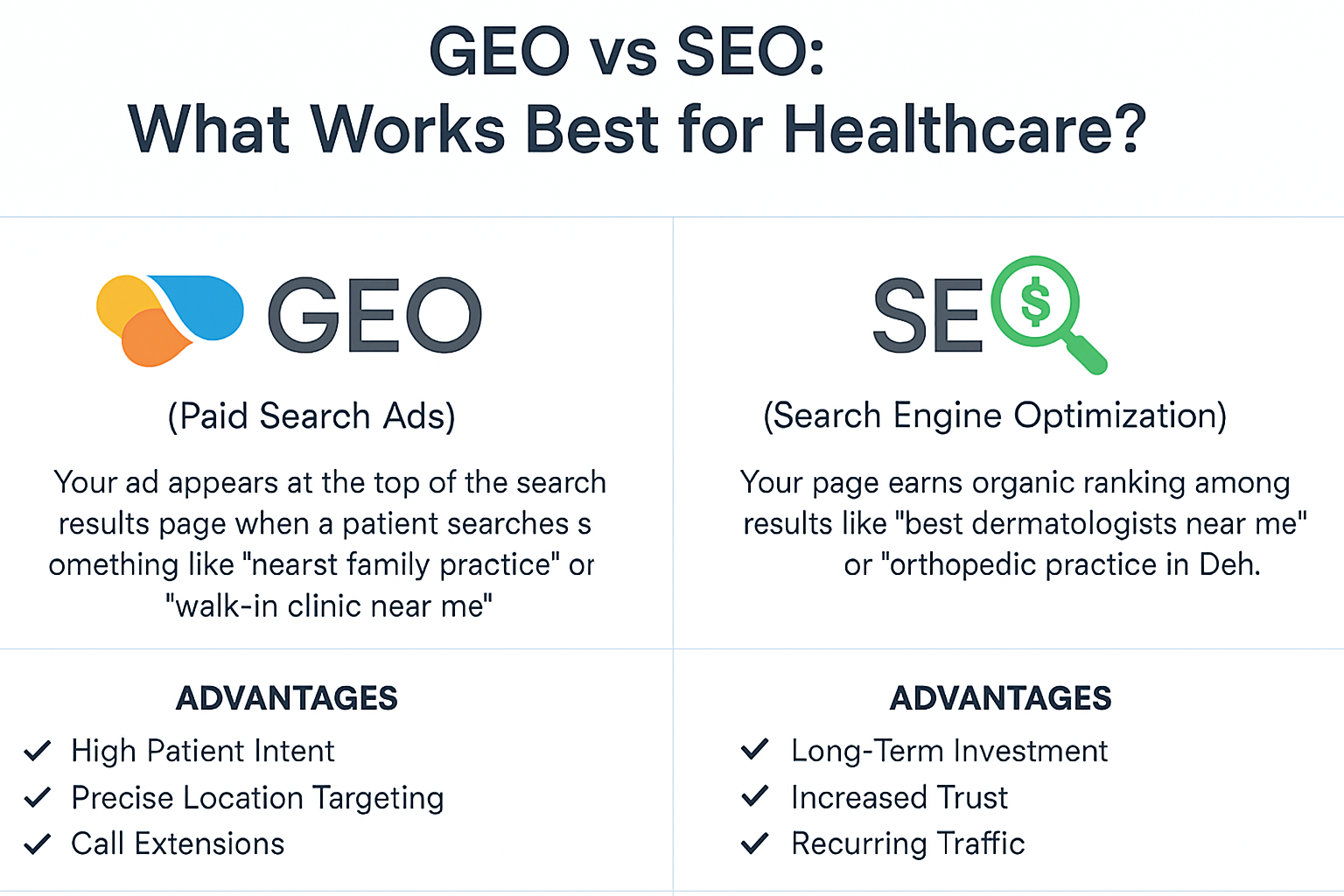Search is changing faster than ever. Traditional SEO used to be about climbing Google’s “10 blue links.” But now, AI-driven engines like Google’s SGE, ChatGPT, Gemini, and Perplexity don’t just rank—they rewrite results in real time. By the time you read this line, thousands of answers have already been reshaped by AI. The key question is: will your content be part of those answers?
That’s where Generative Engine Optimization (GEO) steps in. Think of GEO as the future-ready version of SEO—designed not just for Google rankings, but for visibility inside AI-generated responses.
In this guide, we’ll break down:
- What GEO is and how it works.
- Why it’s crucial for digital marketers.
- The difference between GEO and SEO.
- Actionable strategies to optimize your content for AI engines.
What is Generative Engine Optimization (GEO)?
Generative Engine Optimization (GEO) is the process of tailoring your content so AI-driven models can find, understand, and cite it in their responses. Unlike traditional SEO, where visibility meant clicks on a link, GEO’s success is measured when AI engines use your content directly in their generated answers.
These engines don’t just index—they analyze, summarize, and present answers in real time, often without sending users to your site. If you want your brand to stay relevant, your content needs to be the one fueling those answers.
User behavior has shifted dramatically. Today, most people want instant answers, not long scrolling sessions.
- AI platforms dominate queries: Perplexity.ai now processes 10M+ searches daily, while ChatGPT has surpassed 400M weekly users.
- Decline of organic traffic: Gartner predicts traditional search volume will drop 25% by 2026, with organic clicks falling by over 50%.
- Google’s AI Overviews reward relevance: Location signals, expertise, and authority determine if you appear in AI-driven results.
- First-mover advantage: Early adopters of GEO earn AI visibility before competition grows fierce.
- Authority + conversions: When AI cites your content, it boosts trust, accelerates sales cycles, and strengthens brand recognition.
✅ Case Study: A digital agency recently cracked into Google’s AI Overviews. Within 90 days, they:
- Added 476 new keywords.
- Ranked in the top 3 for 140+ queries.
- Boosted visibility from under 1% to over 27%.
That’s the power of being the source AI engines rely on.
How GEO Works with SEO (Not Against It)
GEO doesn’t replace SEO—it enhances it. The fundamentals like technical SEO, E-E-A-T, schema, and high-quality content still matter. But with GEO, success looks different:
- Citations matter more than backlinks: AI-generated answers may skip backlinks, but they highlight trusted citations.
- New authority signals: Consistency across platforms, accuracy, and expertise count heavily.
- Content modularity: Short, digestible text blocks, visuals, and FAQs outperform long, dense articles.
- Direct answers over pageviews: Your content has impact even if users don’t click through.
- Boost for new sites: Even fresh websites can earn AI citations faster than they can rank in traditional SERPs.
Local SEO Signals Still Drive GEO Success
AI results are becoming more location-sensitive. To appear in Google’s AI Overviews (SGE) and other AI-driven local results, you need:
- NAP consistency (Name, Address, Phone) across all platforms.
- Local backlinks from credible news sites, directories, and blogs.
- Geo-modified keywords like “best dental clinic in Austin” instead of just “dental clinic.”
Google and AI engines tailor results per region, so missing local signals can make your brand invisible—even if you rank well organically.
5 Steps to Optimize Content for GEO
Winning at GEO means blending SEO best practices with AI-ready strategies. Here’s your playbook:
1. Use Geo-Semantic Keywords
- Go beyond “near me” searches.
- Mix long-tail + location modifiers (e.g., “family law attorney in Dallas” instead of just “Dallas attorney”).
- Add entity-based terms AI models understand (e.g., “Silicon Docks” for Dublin).
2. Create Localized Content
- Publish blogs about local events, trends, or community news.
- Share geo-specific case studies.
- Add location-based FAQs for direct AI citations.
3. Structure Content for AI Engines
- Use question-style subheadings (H2/H3s).
- Keep paragraphs short and skimmable.
- Highlight with bullet points, bold text, and tables.
- Include an FAQ section at the end.
4. Build Multi-Layered Authority (E-E-A-T)
- Cite industry reports, research, and expert opinions.
- Showcase author bios, certifications, and company achievements.
- Stay active on LinkedIn, Quora, and industry publications.
5. Strengthen Technical GEO Signals
- Add schema markup (LocalBusiness, FAQPage, HowTo).
- Use hreflang for multilingual content.
- Optimize for mobile-first indexing and speed.
Final Thoughts: GEO is the Future of Search
Generative Engine Optimization isn’t optional—it’s becoming the foundation of digital visibility. As AI platforms take center stage, brands that adapt early will dominate citations, authority, and conversions.

